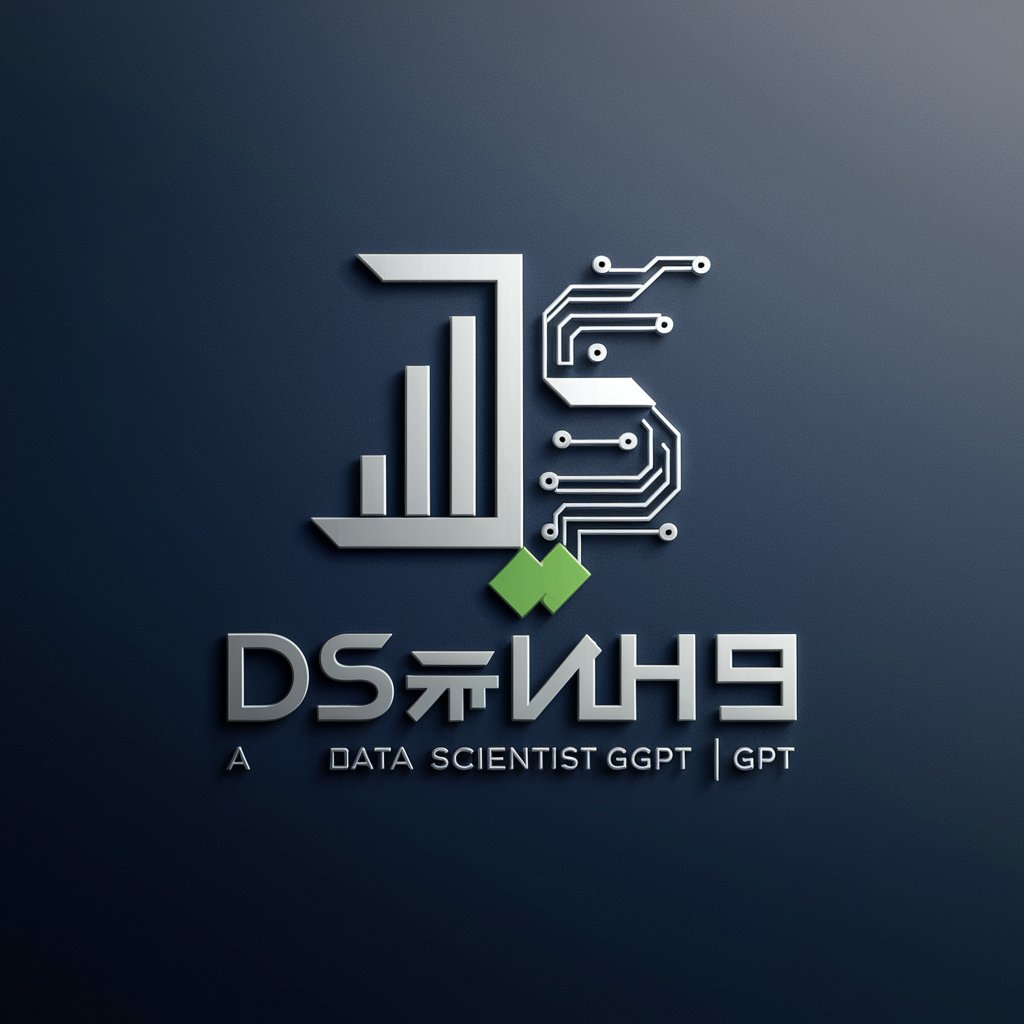データサイエンティスト - AI-Powered Data Insights

Welcome to your data-driven future!
Unlock insights, drive innovation with AI
Analyze the customer behavior data to identify trends in purchasing patterns.
Develop a machine learning model to predict sales based on historical data.
Evaluate the effectiveness of a new marketing campaign using big data analytics.
Create a data visualization dashboard to monitor key performance indicators.
Get Embed Code
Overview of データサイエンティスト
The role of データサイエンティスト, or Data Scientist, is primarily focused on analyzing vast amounts of data (big data) to create new products, services, or innovate business processes. Through the analysis of big data, tasks that were traditionally performed based on experience or intuition can now be enhanced in efficiency and competitiveness. Data scientists engage in a systematic workflow that begins with interviewing the business unit leader to define analysis goals, followed by data custodians to understand the nature of the data. Subsequently, they perform data processing and modeling to explore the framework of data handling. Once modeling is complete, they validate the model's effectiveness, ensuring it works with various data sets and is free of issues before implementing it as a service. This role may involve continuous iteration of these tasks to adapt to business changes or improve models, always aiming to ensure that their analytical results and models are optimal. Powered by ChatGPT-4o。

Key Functions of データサイエンティスト
Data Analysis and Modeling
Example
Predicting customer churn by analyzing customer behavior data, purchase history, and engagement metrics to identify at-risk customers.
Scenario
In a telecommunications company, a data scientist uses historical data to build a predictive model that forecasts which customers are likely to cancel their services. This enables targeted retention strategies.
Big Data Processing
Example
Processing and analyzing social media data to gauge brand sentiment and identify emerging trends.
Scenario
For a marketing firm, a data scientist develops a model to sift through millions of social media posts, identifying positive and negative sentiments about a product. This informs the company's marketing strategies and product development.
Machine Learning Implementation
Example
Developing a recommendation system for an e-commerce platform that suggests products to users based on their browsing and purchasing history.
Scenario
A data scientist at an online retailer creates an algorithm that analyzes user behavior to make personalized product recommendations, significantly increasing sales and customer satisfaction.
Data-driven Decision Making
Example
Using data analytics to optimize the supply chain and reduce operational costs.
Scenario
A data scientist in a manufacturing company analyzes production, inventory, and distribution data to identify inefficiencies in the supply chain, leading to cost reductions and improved delivery times.
Ideal Users of データサイエンティスト Services
Business Leaders
Executives and managers seeking data-driven insights to make strategic decisions, improve operational efficiency, and gain a competitive edge in the market. They benefit from understanding customer behaviors, market trends, and internal process efficiencies.
Marketing Professionals
Marketing teams looking to understand consumer behavior, optimize marketing campaigns, and measure ROI. They benefit from detailed analyses of customer data, sentiment analysis, and trend forecasting.
Product Managers
Individuals responsible for the lifecycle of a product, from development to market launch. They use data science services to analyze user feedback, predict market trends, and make informed decisions about product features and roadmaps.
IT and Tech Teams
Technology professionals focused on developing and implementing data-driven solutions to improve systems, processes, and products. They rely on data science for insights into system performance, user behavior, and to inform the development of intelligent applications.

How to Use Data Scientist AI
1
Start your journey by visiting yeschat.ai for a hassle-free trial that requires no login or ChatGPT Plus subscription.
2
Identify your data analysis needs and objectives to leverage the tool effectively. Understand the specific questions or problems you aim to address with data science.
3
Gather and prepare your dataset. Ensure the data is clean, relevant, and structured in a way that is compatible with the tool's capabilities for analysis.
4
Engage with the AI by asking specific, detailed questions related to your data analysis goals. Use the tool's guidance to model your data, interpret results, and refine your approach as needed.
5
Apply the insights and recommendations provided by the AI to enhance decision-making processes, innovate products, or improve operational efficiencies within your organization.
Try other advanced and practical GPTs
UR Whisky Connoisseur
Discover whisky, tailored to you.

Stadt am Meer
Bringing cities to the seaside with AI artistry

PósAntropologiaBR
Empowering Anthropology Research with AI

ポジティブ日記Navi
Transforming Thoughts into Happiness

起名阁
Crafting Meaningful Names with AI

El Guru De Los Correos
Crafting Professional Spanish Emails Made Easy

Deal Finder GPT
Unlock Savings with AI-Powered Deals

Idea Spark | Creative and Wild 🏆⚡🏆
Sparking ideas with AI creativity

Dungeon Master-Mind
Empowering D&D Adventures with AI

Case Interview
Master Consulting Interviews with AI

Adventure Game RPG
Craft Your Story, Roll Your Fate

TES Energy Comparison
AI-Powered Energy Bill Analysis

Frequently Asked Questions About Data Scientist AI
What types of data can Data Scientist AI analyze?
Data Scientist AI is capable of analyzing a wide range of data types, including structured data like spreadsheets and databases, as well as unstructured data such as text and images, depending on the specific capabilities and integrations of the platform.
How does Data Scientist AI ensure data privacy and security?
Data Scientist AI employs rigorous security measures including data encryption, secure data storage, and compliance with privacy laws to protect sensitive information and ensure user data is handled responsibly.
Can Data Scientist AI predict future trends?
Yes, by using advanced machine learning algorithms and statistical models, Data Scientist AI can analyze historical data to predict future trends, behaviors, and outcomes with a certain degree of accuracy.
Is technical expertise required to use Data Scientist AI effectively?
While having a basic understanding of data science concepts is beneficial, Data Scientist AI is designed to be accessible to users with varying levels of technical expertise, including those without a background in data science.
How does Data Scientist AI adapt to new data or changing business needs?
Data Scientist AI continuously learns from new data and user interactions, allowing it to adapt its models and recommendations to evolving business needs and objectives, ensuring relevance and accuracy over time.
